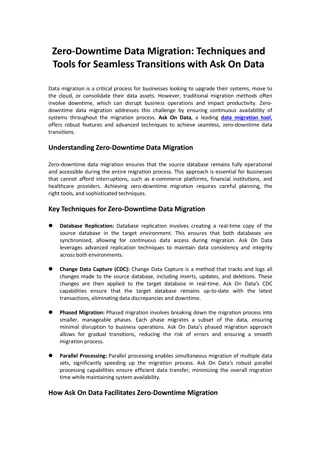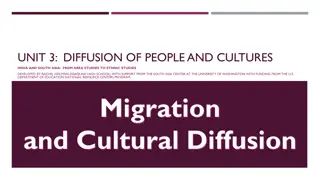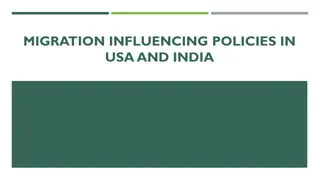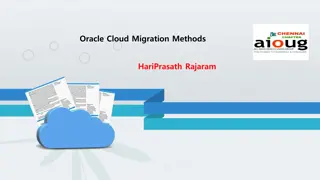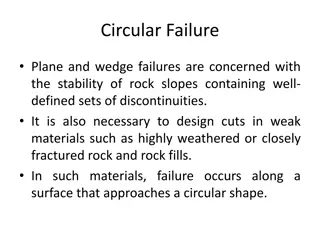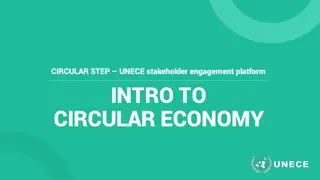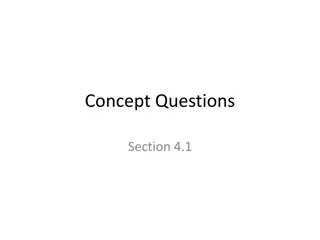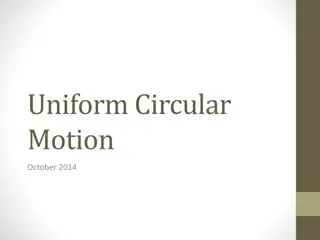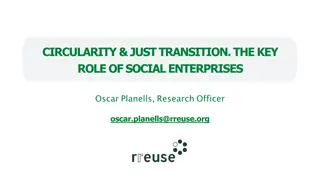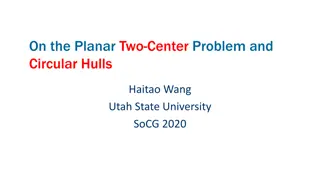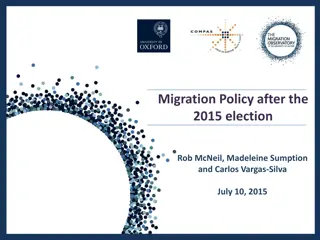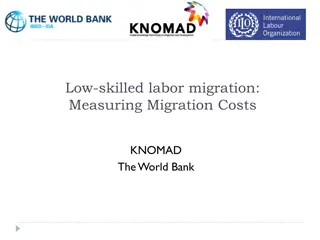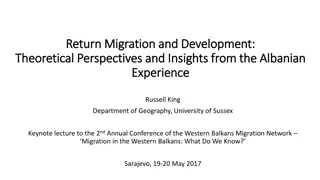Circular Migration for Health Workforce Retention
Advancing the understanding of circular migration as an effective and equitable mechanism for health workforce retention and motivation. This qualitative study focuses on Romanian physicians in Germany, exploring push and pull factors influencing their migration patterns. Results highlight factors such as high-tech medicine opportunities in Germany and poor resources in Romania, shaping migration decisions and patterns.
Download Presentation

Please find below an Image/Link to download the presentation.
The content on the website is provided AS IS for your information and personal use only. It may not be sold, licensed, or shared on other websites without obtaining consent from the author.If you encounter any issues during the download, it is possible that the publisher has removed the file from their server.
You are allowed to download the files provided on this website for personal or commercial use, subject to the condition that they are used lawfully. All files are the property of their respective owners.
The content on the website is provided AS IS for your information and personal use only. It may not be sold, licensed, or shared on other websites without obtaining consent from the author.
E N D
Presentation Transcript
Parallel Session. Advancing the understanding of circular migration as an effective and equitable mechanism for health workforce retention and motivation Organiser: Marius Ungureanu, Babes Bolyai University, Romania & EUPHA section Health Workforce Research (EUPHA-HWR)
Migrant healthcare workers experiences and mobility patterns in a global health crisis: a qualitative study with Romania physicians in Germany Ellen Kuhlmann, Marius Ungureanu, Alexandra Dopfer-Jablonka, et al. Project PROTECT, German Global Health Research Alliance GLOHRA
Background Methods. Romanian physicians in Germany as an empirical case study. Germany: high-resourced healthcare system; 4.53 physicians:1.000 population; 12% migrant HCWs; Romanian physicians are the largest group of foreign physicians. Romania: poor-resourced health system typical of CEE countries; HCWF density below EU average; 3.04 physicians:1.000 population; high outflows since years, but the number of annual medical graduates is above EU average. Qualitative explorative approach; interviews (n=21) collected from mid of September to early November 2022 and content analysis was performed. Aims and objectives. bring migrant healthcare workers (HCWs) into the debate of future HCWF policy and priorities, take an actor-centred approach and contribute new knowledge of HCWs perceptions and emergent mobility patterns in the middle of a global health crisis, identify capacity for circular migration and equitable and effective solutions of HCWF policy.
Results. Push and pull factors Major pull factors, Germany Major push factors, Romania High-tech medicine and high medical standards provide better opportunities for improving medical knowledge and technical skills. Opportunities for professional and academic career development, especially for young physicians. Residency training provide freedom of choice of speciality. Poorly resourced health system. Poor career opportunities and lack of choice. Nepotisms and lack of transparency and fairness in the promotion process. Widespread corruption in all areas of healthcare system and society.
PUSH: We have a lack of everything [in Romania], and then there is the corruption (#5, M) PULL: And then, Germany gave me the alternative, yes: Do you absolutely want to learn medicine, here you go. If you want to work by all means, here you go. If you want to earn, you can earn. If you want to earn more, then you have to work more, and, um, yes. (#8, F)
Results. Migration patterns, four types The mobile EU citizen type Integrated with open future type Highly flexible, aiming for the best work and living conditions: Feeling as European citizen and not limiting career choices to nationality. Practicing a commuter model to combine advantageous work conditions in Germany with a family life in Romania. Making mobile choices (non RO citizen): medical education in Romania, residency training in Germany, and then considering to move to Switzerland or back to the EU home country. Preference for staying in Germany, but sometimes limited to residency training or shaped by the German political climate. Highly ambiguous about their migration decision; strong emotions to keep a door open to Romania and give their country a chance .
So that's always..., I think about it almost every week: How would it be to go back to Romania? Because I felt more useful there than in this society. Because, as I said, I always had this willingness: we have to change something, we have to change a lot in the health system [in Romania]. There are a lot of problems, but here [in Germany] it works reasonably well. (#14, F) Mhm, [to go back to Romania is] a need, I would almost say. To give my home country another chance and see if I can also use my professional knowledge here [in Romania]. (#5, M)
Initially, the plan was actually, I come, I do the residency here in this super big hospital, where you have everything, and then I go back. So that I then also want to bring my support at home. It's a bit like the dream I had back then. Maybe it hasn't completely disappeared, I have to say, yes. Because at home, in the homeland, good specialists are actually also needed. But now, of course, with the whole family situation, it's turned out a bit differently, and so. (#2, F)
Results. Migration patterns, 4 types The wish-to-return type The settled-in-Germany type Strong wish to go back to Romania, although the work situation and support of colleagues were perceived as very good. High professional commitment, investment in training and language skills, and engagement in the job. Difficulties perceived as temporary problems and manageable. Change of employer but not the goal to work in Germany. Some had strong family ties, or got German citizenship. This type was more an exception, only one example. I am ready! Whenever! Even now, I am ready to pack my suitcase. So it depends on my husband. (#4, F)
Capacity for circular migration Mobility patterns 1&2 may support circular migration. Participants are ready to explore flexible HCWF models: give back to their home country and also advance their medical/ academic careers in Germany To make circular migration happen, action has to be taken on all levels: - health systems/ novel HCWF governance, - professional associations, law, education systems, - healthcare management, - bottom-up individual action.
Thank you! References Kuhlmann E, Ungureanu M-I, et al. Migrant healthcare workers during COVID-19: bringing an intersectional health system-related approach into pandemic protection. A German case study, medRxiv preprint; https://medrxiv.org/cgi/content/short/2023.01.28.23285135v1 Acknowledgements Acknowledgements. We thanks the participants in the study for sharing their time and the PROTECT team for their support. PROTECT is supported by the German Alliance for Global Health Research GLOHRA (https://globalhealth.de/funded-projects.html) with funds from the German Federal Ministry for Education and Research BMBF




